On April 23, 2017, the LGBT outreach Out at St Paul, located in the Archdiocese of New York at St. Paul the Apostle Church, will “celebrate and remember the work of former OSP [Out at St Paul] member and poet, Ned O’Gorman. In 2012, O’Gorman formed the Out at St Paul Book Club. But O’Gorman is perhaps best known as a social reformer involved in Dorothy Day’s Catholic Worker Movement and as a poet and writer who often described his struggle to integrate homosexuality and Catholicism.
In his 2011 work, “The Carnal Embrace,” O’Gorman argued for the full-inclusion, even to the Diaconate, of same-sex male couples. Yet, earlier, in 2007 and 2008, O’Gorman was explicit about his support for same-sex marriage; he wrote:
I would not be true to the depth of my love for the church if I did not hope that there might be further and courageous examination of homosexual love by the body of the faithful, homosexual and heterosexual. The church must find courage to bless those homosexual couples who affirm mutual fidelity, a common love, and the intention to build a life together in body and spirit till death parts them.
On April 4, 2017, and again on April 13, Out at St Paul posted two separate articles from the gay periodical “The Advocate” about the new music video for Christian rock star turned gay-advocate Trey Pearson in which the singer enters a church during services and full-mouth kisses the gay cantor. In 2016, the gay-affirmative LGBT Ministry at St. Francis of Assisi, also in the Archdiocese of New York, similarly publicized Pearson.
This Lent, Out at St Paul featured the homoerotic work of gay artist Douglas Blanchard. In a series of 24 paintings, Blanchard depicted Jesus Christ as a contemporary gay man; including a group of BDSM-inspired images of a naked Jesus being tortured by soldiers. One reviewer wrote:
…the most controversial painting in the series would be #22, “Jesus Returns to God.” Blanchard deliberately avoids traditional religious language, and translates “the Ascension” into its plain meaning. Here, the shirtless Jesus, wearing blue jeans, is lifted into the sky in the arms of a handsome angel who appears to be kissing him, holding him tightly with one hand on his butt. It is definitely a homoerotic image — but it suggests the intimacy that exists as “mortal human flesh was made radiant by becoming part of God.”
Recently, Out at St Paul promoted articles about “Queering Mary” and “Queer Saints.” This concerted effort to “Queer Christ” goes part and parcel with a larger movement in gay-affirmative Catholic ministries to integrate the homosexual orientation with Catholicism:
The easiest and quickest way to achieve this goal is through the imagining of a queer Church and ultimately a “Queer Christ.”

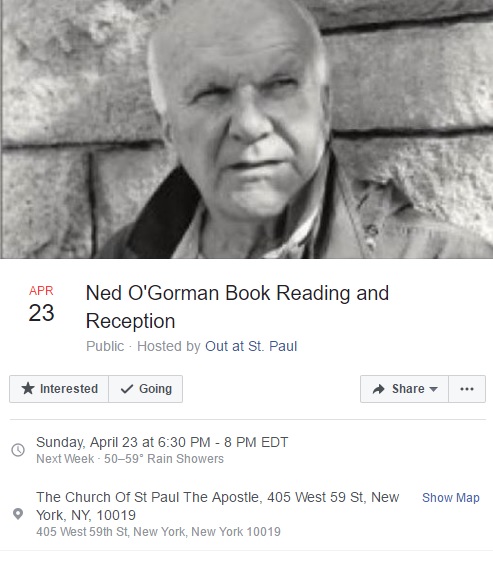
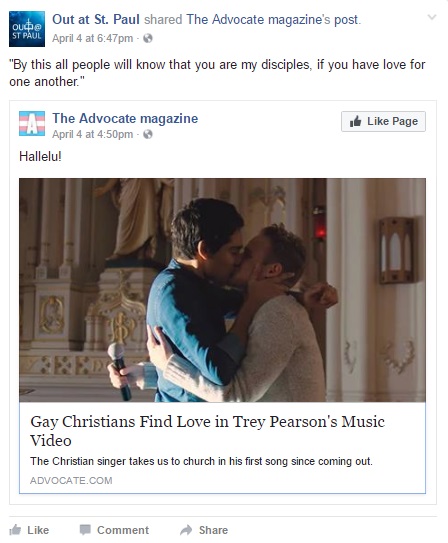


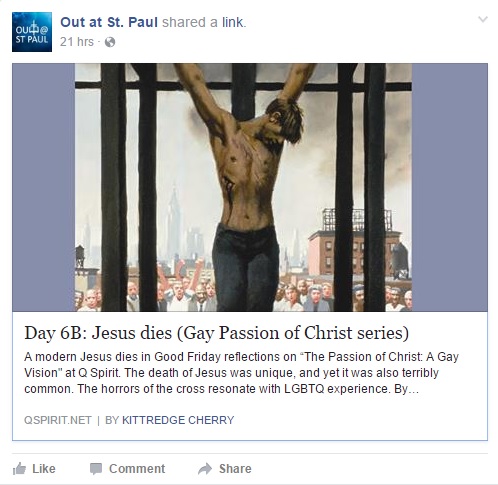




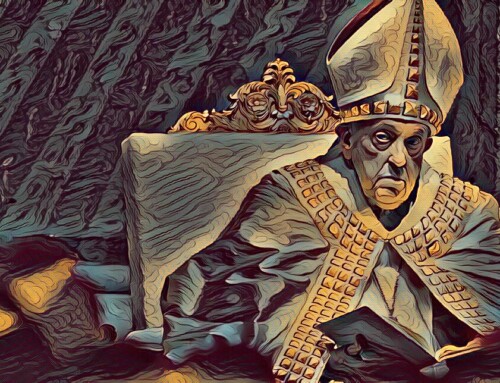
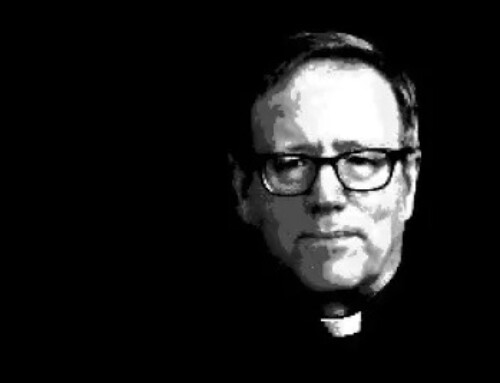
This is a satanic blasphemy of everything Christianity stands for. Horrible.
And Dolan is presiding over this horror show. What a travesty!
Satan must be proud
One of the things that always surprises me when the broader culture hopes the Church will revisit one or more of its teachings on sex and marriage is how fundamentally they do not understand how fully integrated the Church’s understanding of sex, marriage and family really are. Even if the Church could change a teaching (obviously, it can’t since these teachings are from God, not men), it wouldn’t be able to change a single teaching as the Church’s entire theology on sex, marriage and family would come tumbling down. Or perhaps that is what the people hoping for a change really want.
This is a critical reason why we Catholic Christians must fight this head on. This truly is an Abomination and Almighty God is going to rein down his Judgment on the Church and the World in due time! I’m fed up with these Sodomites pushing their sinful life style on the rest of us. If justice isn’t done soon, God’s Justice will come down soon. “ALMIGHTY GOD WILL NOT BE MOCKED!’